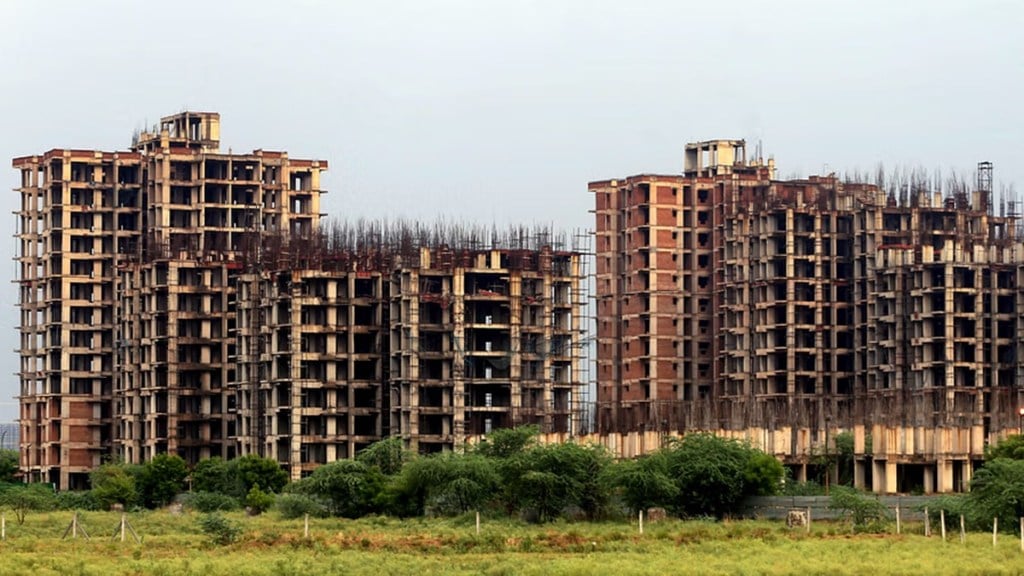By Girish Kousgi
India’s economy demonstrated remarkable stability amid global disruptions, supported by strong domestic consumption, increased government spending—particularly in infrastructure—and accommodative monetary policy. The country’s real estate sector is expected to reach $1 trillion in market size by 2030, up from $200 billion in 2021. By 2025, it will contribute 13% to the country’s GDP.
India is witnessing a steady shift in population from rural to urban areas in search of better employment opportunities. The housing shortage is primarily in the low-income group and economically weaker section categories, accounting for 95% of the deficit. The foremost reason is the dearth of affordable capital for quality homes. Households earning less than `9 lakh annually remain underserved by formal credit channels with many being new to credit and residing in semi-urban or rural regions.
Nevertheless, affordable housing has seen a significant surge in demand, particularly in tier-II to IV cities. This growth is driven by easier access to low-cost loans, along with improved availability of housing and growing self-construction activities.
Policy reforms pave way for transparency and demand
To regulate realty across all states and safeguard customer interests, the Centre introduced the Real Estate Regulation and Development Act (RERA) in 2016. RERA requires developers to comply with predetermined timelines in delivering projects while opening escrow accounts to ensure funds are not diverted for other purposes. By mandating detailed disclosures by developers, RERA has enhanced transparent communication for home buyers and curtailed project delays.
Besides policy reforms, rationalisation of tax rates in the Union Budget has benefitted homebuyers since it leaves them with more disposable income. The tax relief is expected to augment demand for housing, benefitting middle-class buyers, investors, and landlords due to the lower tax liabilities and reduced compliance issues. Homeowners also gain from a revision in rules allowing two self-occupied properties to be treated as tax-free versus only one previously. This will give a fillip to home ownership, facilitating the purchase of a second home in tier-II cities and beyond.
PMAY, GST and land bank
The Pradhan Mantri Awas Yojana (PMAY) further supports home ownership via interest subsidy on home loans. Under PMAY-Urban 2.0, a Rs 10-lakh crore investment will be made to meet the housing needs of 10 million urban poor and middle-class families. Recently, the scheme has gained momentum with the Centre approving the construction of 2.35 lakh houses across nine states. Of these, over 1.25 lakh homes have been sanctioned for women alone. Moreover, the PMAY-U deadline has been extended to December 31, allowing more time to complete the sanctioned houses. From the lender’s perspective, the interest subsidy scheme implies that borrowers will maintain their home loan accounts for a minimum of five years in order to fully access the benefits under PMAY, thereby fostering long-term customer retention and sustained engagement.
Commercial real estate transactions can be democratised by fractional property ownership, allowing multiple people to own a property jointly while sharing the costs and benefits. Essentially, each person receives equity in a specific property, along with access to its amenities and a share in the rental income or its appreciation. Indian citizens as well as non-resident Indians (NRIs) can invest in such properties, but NRIs must adhere to Foreign Exchange Management Act rules and only use NRI-designated bank accounts for these transactions.
One key reform of the past decade that needs mention is the goods and services tax (GST). The GST rate is 1% for affordable homes and 5% for other categories. To increase mortgage penetration in the country and ensure that housing is within the reach of all sections of society, it is imperative that GST slabs for residential properties are further lowered. Rationalised, lower rates will also benefit developers since they will provide an impetus for additional sales.
Since land constitutes 30-60% of the total price of a housing unit, a proposed 1% land bank policy would be a welcome move to address the chronic shortage of land for affordable housing in urban India. This policy aims to reserve a dedicated portion of government-owned or underutilised land in every state, exclusively for developing affordable housing projects. Built on a model similar to the special economic zone land zoning framework, this initiative would ensure a steady supply of urban land for social housing.
India’s housing sector stands at a crossroads—energised by forward-looking policies, inclusive reforms, and a deeper understanding of home ownership as a national development driver. The synergy between government initiatives, demographic shifts, and increased access to formal finance is steadily reshaping the contours of India’s real estate.
To ensure this momentum is sustained, policy must focus on scalability, digital enablement, and stronger public-private partnerships. Only then can India bridge the urban housing deficit, fulfil rising aspirations, and transform real estate into a pillar of inclusive growth as we move towards the goal of Viksit Bharat by 2047.
The writer is MD and CEO, PNB Housing Finance.
Disclaimer: Views expressed are personal and do not reflect the official position or policy of FinancialExpress.com. Reproducing this content without permission is prohibited.
